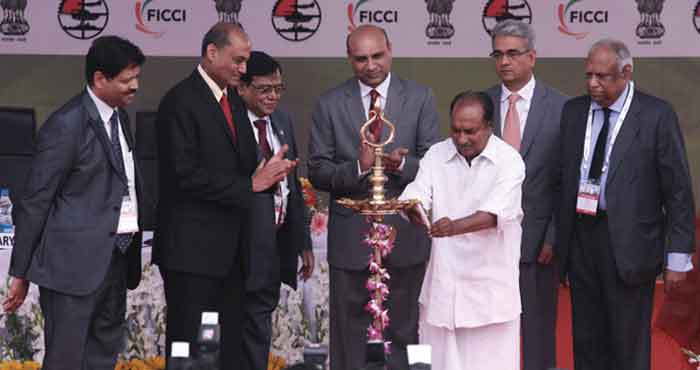
Defence Minister AK Antony lighting the lamp to inaugurate the DEFEXPO 2012 along with the Minister of State for Defence, Dr MM Pallam Raju and other dignitaries
Estimates are that India will continue to be a huge arms market and over the next decade, the government is likely to spend $250 billion to procure weapons and systems. Of the total estimate, $20 billion is expected to be spent on Homeland security. The IAF alone is expected to invest over $80 billion in the next five years to restore its combat potential through capital acquisition of fighter aircraft and other allied weapon systems. The Defexpo is undoubtedly set to grow in the years ahead driven essentially by the growing demand for weapons and other systems to meet with the needs of national security.
The seventh in the series of biennial exhibitions, the Defexpo India 2012, was held at Pragati Maidan from March 29 to April 01 this year. The event was organised jointly by the Defence Exhibition Organisation under the Department of Defence Production of the Indian Ministry of Defence (MOD) and the Federation of Indian Chambers of Commerce and Industry (FICCI). Unlike the Aero India Air Show held at Bangalore, Defexpo is focussed largely on Land, Naval and Internal Security Systems as also business activity encompassing manufacturers, suppliers and those providing technology and services.
Almost all the leading players of the global defence industry were present to showcase their latest products and capabilities.
The primary objective of the event was to provide a platform to bring together the best in the global defence industry for interaction between Indian and foreign companies engaged in defence production. The exercise provided an opportunity for the projection of the capabilities of Research & Development as also that of production in India in the regime of defence hardware and software. It also provided opportunities for participants to initiate dialogue to explore avenues for collaboration, joint ventures, new market opportunities and ways to synergise their efforts.
Almost all the leading players of the global defence industry were present at the exhibition to showcase their latest products and capabilities. The first such exposition was held in 1999 wherein there were fewer than 200 companies participating. This was followed by the second one in 2002 and every two years thereafter.
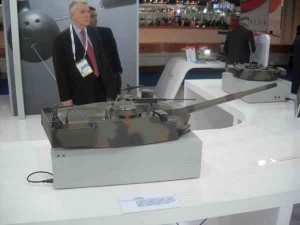 In the seventh edition of the exhibition, there were 567 companies participating as compared with the 412 in the previous show two years ago. This time, a total of 15 countries had established their pavilions; there were 63 official delegations from overseas, 14 of them headed by Ministers. Overall, there was a 15 per cent increase in the display area and the event was patronised by over 60,000 business visitors. Clearly, India is embarked on a growth trajectory in the defence industry and has become an attractive destination for investment, a trend that was clearly attracting international attention as evident from the response witnessed this year. The exhibition has been generating growing interest from the defence industry around the world and has carved a niche amongst such major global defence expositions.
In the seventh edition of the exhibition, there were 567 companies participating as compared with the 412 in the previous show two years ago. This time, a total of 15 countries had established their pavilions; there were 63 official delegations from overseas, 14 of them headed by Ministers. Overall, there was a 15 per cent increase in the display area and the event was patronised by over 60,000 business visitors. Clearly, India is embarked on a growth trajectory in the defence industry and has become an attractive destination for investment, a trend that was clearly attracting international attention as evident from the response witnessed this year. The exhibition has been generating growing interest from the defence industry around the world and has carved a niche amongst such major global defence expositions.
Event Profile
Defexpo India is one of the largest trade shows of its kind to showcase emerging technologies. The major participants at the show this year were from the US, Russia, France, Italy, and Israel. Others with a lower profile included Belgium, Bulgaria, Canada, Cyprus, Czech Republic, Finland, Germany, Greece, Hungary, Japan, Republic of Korea, Netherlands, Norway, Panama, Poland, Singapore, Slovak Republic, Spain, Sweden, Switzerland, South Africa, Turkey and the UK. Exhibitors included companies dealing with Anti-Aircraft Guns, Artillery, Propulsion Systems, Communication Systems, Military Vehicles, Robotics, Decoy Systems, Rocket Launcher Systems, Diesel Engines, Satellites & Space Technologies, Environment Control Systems, Ship Building & Ship Repair, EW/ECCM Systems, Explosives and Detection Systems, Ammunition, Fire Control Systems, Howitzers, Submarines, Tanks, Missile Systems and Unmanned Aerial Vehicles.
Clearly, India is embarked on a growth trajectory in defence industry…
The exposition hosted visitors from organisations such as Indian defence industry, Indian private sector industry, government departments, manufacturers, suppliers, dealers of defence products/equipments/ services from India and abroad, defence attaches in India from over 50 countries, serving officers from the Indian Army, the Indian Air Force (IAF) and the Indian Navy, senior functionaries from the Indian Coast Guard, Para Military Forces and the Police.
Inauguration
The four-day event was formally inaugurated by A K Antony, Minister of Defence. Accompanying him on the dais were Dr M M Pallam Raju, Minister of State for Defence, Shashi Kant Sharma, Secretary MOD, Shekhar Agarwal, Secretary, Defence Production and R V Kanoria, President, FICCI. The utterances at the inaugural function by the dignitaries on the dais were in the nature of routine and formal rhetoric and merely reiterated all that had been said in the past. In terms of content, there was nothing new or exciting especially for the participants from abroad.
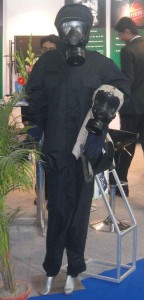 Delivering the usual sermon about transparency in defence transactions, Antony stated, “India has always been recognised as a responsible power and a stabilising factor in this region, in the face of various security challenges originating from different sources around us. India has traditionally been a peace-loving nation. However, we have to be ready to meet any challenge to our territorial integrity and sovereignty.” The Minister of Defence drew the attention of the audience to the thrust by the government towards the development of indigenous capability and self-reliance in the defence industry. He referred to the policy changes that had been promulgated some time ago in respect of fulfilment of offset obligations and pointed out that offset banking was now permissible and that the scope of investment under this scheme had been expanded to include civil aerospace, internal security and training.
Delivering the usual sermon about transparency in defence transactions, Antony stated, “India has always been recognised as a responsible power and a stabilising factor in this region, in the face of various security challenges originating from different sources around us. India has traditionally been a peace-loving nation. However, we have to be ready to meet any challenge to our territorial integrity and sovereignty.” The Minister of Defence drew the attention of the audience to the thrust by the government towards the development of indigenous capability and self-reliance in the defence industry. He referred to the policy changes that had been promulgated some time ago in respect of fulfilment of offset obligations and pointed out that offset banking was now permissible and that the scope of investment under this scheme had been expanded to include civil aerospace, internal security and training.
In his address, Dr M M Pallam Raju, the Minister of State for Defence stated, “The government is in the process of finalising the 15-year Long Term Integrated Perspective Plan (LTIPP) for the Armed Forces to facilitate planning of investment in the defence sector by the domestic sector of the industry including Research and Development, technology upgrades and collaboration with foreign industry partners to meet the future requirements of the armed forces.” Shekhar Agarwal, Secretary – Defence Production rattled out statistics on how Defexpo had been growing from strength to strength since its inception 13 years ago. While delivering the vote of thanks, R V Kanoria, President – FICCI, exhorted the private sector to rise to the occasion, seize the opportunities available in this sunrise sector and thereby contribute effectively to strengthen India’s defence industry.
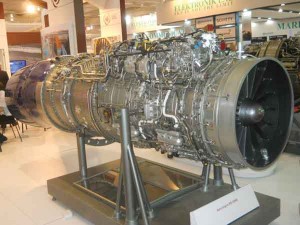 Dubbed by SIPRI, the Swedish think-tank as “the world’s largest arms importer”, India has understandably become a favourite destination for the global defence industry. This was manifest at the Defexpo 2012 where global defence industry majors were present to sell their tanks, unmanned aerial vehicles, submarines, aircraft, howitzers, futuristic infantry combat vehicles, missiles, infantry weapons and support equipment. What enhances their comfort levels is that India has not been able to build up a strong defence-industrial base and hence is likely to continue to be the world’s largest arms importer in the foreseeable future. And self-reliance in defence industry will continue to remain a distant dream for India.
Dubbed by SIPRI, the Swedish think-tank as “the world’s largest arms importer”, India has understandably become a favourite destination for the global defence industry. This was manifest at the Defexpo 2012 where global defence industry majors were present to sell their tanks, unmanned aerial vehicles, submarines, aircraft, howitzers, futuristic infantry combat vehicles, missiles, infantry weapons and support equipment. What enhances their comfort levels is that India has not been able to build up a strong defence-industrial base and hence is likely to continue to be the world’s largest arms importer in the foreseeable future. And self-reliance in defence industry will continue to remain a distant dream for India.
The US Pavilion
Twenty of the leading companies from the American military-industrial establishment were present at Pragati Maidan to showcase their products and services at the US International Pavilion. Covering an area of 800 square metres, the US pavilion was occupied by exhibitors representing ten American states of which more than half were new to the show. The US-India Business Council (USIBC) was present at the Defexpo with the largest industry delegation designated as an Executive Mission led by General Paul J Kern (Retd), Senior Counsellor, The Cohen Group and Vice Admiral (Retd) Kevin J Cosgriff, Senior Vice-President, International Business & Government, Textron Systems.
There were 567 companies from 15 countries and 63 official overseas delegations.
The USIBC was constituted in 1975 at the request of the governments of India and the US to involve the private sectors of both countries to advance two-way trade, enhance investment flows and deepen commercial ties between the two nations. Today, the USIBC is the premier business promotion association consisting of 350 of America’s and India’s top companies engaged in pursuing the objectives of the umbrella organisation. Sales of defence equipment to India have progressively risen from around $200 million in 2001 to over $12 billion today. The level of leadership of the high-powered delegation signalled the strengthening strategic partnership and the expanding global security relationship between the two democratic nations.
Described as, “the single largest industry delegation to the show”, it included senior executives representing America’s top defence companies including ATK, BAE Systems, The Boeing Company, The Cohen Group, DuPont, General Dynamics, Harris, Honeywell, ITT Exelis, L-3 Communications, Lockheed Martin, Navistar Defence, Northrop Grumman, Oshkosh, Pillsbury Winthrop Shaw Pittman LLP, PwC, Raytheon, Rockwell Collins, SAS, Sikorsky, Telephonics Corporation, Textron Systems, Tyco and several others. The leaders of the USIBC’s Executive Mission stated, “We are here once again to reaffirm our commitment to a long-term partnership with India by offering the best capabilities that are mission-ready and operationally proven, robust industrial partnership and state-of-the art technologies offered at the best value when measured over the lifetime of the product.” The US defence industry was at the Defexpo to showcase advanced capabilities to meet with the requirements of India’s land, naval, and internal security systems. On display were the current offerings such as Textron Systems’ Ground Based Smart Weapons and Naval Common Unmanned Surface Vessel, BAE Systems’ M777 155mm Lightweight Howitzer and other best-in-class offerings from US industry such as Armoured Security and Light Combat Vehicles, Tactical Communications Equipment, Integrated Weapons Systems, Thermal Imaging Technologies and Network Munitions Systems.
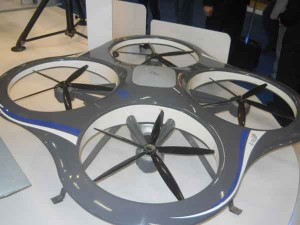 Boeing Defence, Space & Security that has a high stake in the Indian defence market, had showcased a comprehensive portfolio of products and services including the C-17 Globemaster III, P-8I, AH-64D Apache, CH-47F Chinook, V-22 Osprey, ScanEagle and 737 Airborne Early Warning & Control. A notable success of the American endeavour was the agreement for joint venture between Mahindra and US-based Telephonics Corporation, a unit of Griffon Corporation to manufacture airborne radar systems in India at a factory to be set-up in Bangalore. The venture will support airborne maritime surveillance systems for the Indian Navy and the Indian Coast Guard. In addition, the venture will make provisions for Air Traffic Management services, Homeland Security and other emerging surveillance requirements.
Boeing Defence, Space & Security that has a high stake in the Indian defence market, had showcased a comprehensive portfolio of products and services including the C-17 Globemaster III, P-8I, AH-64D Apache, CH-47F Chinook, V-22 Osprey, ScanEagle and 737 Airborne Early Warning & Control. A notable success of the American endeavour was the agreement for joint venture between Mahindra and US-based Telephonics Corporation, a unit of Griffon Corporation to manufacture airborne radar systems in India at a factory to be set-up in Bangalore. The venture will support airborne maritime surveillance systems for the Indian Navy and the Indian Coast Guard. In addition, the venture will make provisions for Air Traffic Management services, Homeland Security and other emerging surveillance requirements.
Russian Presence at the Expo
Historically one of the largest suppliers of defence equipment to India, Rosoboronexport of Russia, was present at the Defexpo with 37 companies showcasing more than 150 products for military application. With continuing dependence on tanks of Soviet origin on account of the lack of success in the indigenous Arjun MBT programme, the Russian delegation was present to offer the T-90S, a new modernisation package for the T-90 tank being produced under licence in India. Although described as a new tank, it is merely an upgraded version of the vintage T72 which is no longer on order by the Russian army. The prototype of the T-90S Modernised Main Battle Tank was the central focus of the Russian display at the exposition. It is the first time the tank has been shown outside Russia since the time it was unveiled at the Russian Arms Expo 2011 in September last year.
The Swedish think-tank, SIPRI, has dubbed India as “the world’s largest arms importer”.
The Russian aerospace industry is also pitted against European and American companies for three different Indian tenders for helicopters for which it has fielded the KA226T light utility helicopter and the MI26T2 heavy lift machine for the IAF as also the KA28 for the Indian Navy. It already has orders for 80 MI17V5 medium lift helicopters currently under delivery to the IAF.
Israeli Companies at the Defexpo
Israel, the other major supplier of defence equipment to India, had perhaps the largest pavilion occupying nearly 1,300 square metres of space. On offer at the venue were active defence systems comprising a wide range of sensors, battle command systems and missiles for land and air platforms, surface ships and submarines, advanced weaponry including a range of precision-guided weapons, command, control and communications solutions as also modern electronic surveillance and electro-optical systems. For the first time in India, the Israel Aerospace Industry (IAI) presented the Advanced Virtual Training Solution MI-NET and the comprehensive and high quality mission trainer, Unmanned Aerial Systems Mission Trainer (UMT-UAS).
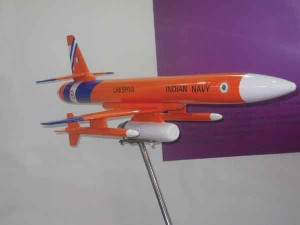 Also on offer from IAI were the EL/I-3360 Maritime Patrol Aircraft (MPA) and the Heron I, a Medium Altitude Long Endurance Unmanned Aerial System for strategic and tactical missions. The MPA is a multi-role airborne system designed to operate as a fast-deployment independent asset providing comprehensive situational awareness and maritime domain superiority.
Also on offer from IAI were the EL/I-3360 Maritime Patrol Aircraft (MPA) and the Heron I, a Medium Altitude Long Endurance Unmanned Aerial System for strategic and tactical missions. The MPA is a multi-role airborne system designed to operate as a fast-deployment independent asset providing comprehensive situational awareness and maritime domain superiority.
One of the highlights of the show was an agreement between Indian private sector major Mahindra & Mahindra Limited and Israel’s Rafael Advanced Defence Systems. The agreement has been to form a joint venture with Israel’s Rafael to develop and manufacture naval systems at a factory in Pune. The products will include Anti-Torpedo Defence Systems, Electronic Warfare Systems, Advanced Armouring Solutions and Remotely Operated Weapon Stations for Futuristic Infantry Combat Vehicles.
The French Connection
With 25 companies big and small, showcasing a wide range of innovative products and technologies at the exposition, France was well represented. The French Pavilion was coordinated by GICAN, the French Marine Industry Association and GICAT, the French Land Defence Industry Association. The three major projects with the French defence industry i.e. the Scorpene Submarines for the Indian Navy, upgrade of the Mirage 2000 fleet and the mega deal for the 126 Rafale combat aircraft for the IAF, have strengthened the strategic partnership between France and India. Exhibitors from France amongst others included leading entities such as DCI, DCNS, EADS, Euronaval, MBDA, Nexter, SAFRAN Group and Thales. India will procure 500 Mica air-to-air missiles from French firm MBDA for the Mirage 2000 aircraft fleet being upgraded by Dassault-Thales. Other options offered to the Indian Armed Forces by MBDA in ground-to-air systems include the SHORAD (short range air defence) program, for which the company is offering the 20-kg infra-red guided Mistral missile.
India has become a favourite destination for the global defence industry.
At this Defexpo, DCNS France signed through its Indian subsidiary a 50 million euro contract with Indian company SEC industries for the local manufacture of equipment for P75 Scorpene submarines. The contract covers the manufacture of equipment like hull hatches, cofferdam doors, hunkle hoses, ballast vent valves, high pressure air cylinders, weapon handling and storage systems.
European Companies at the Expo
Apart from France, European defence majors had a sizeable presence at the Defexpo. Under the Italian defence major Finmeccanica, there were its group companies AgustaWestland, Alenia Aermacchi, DRS Tactical Systems, SELEX Galileo, Oto Melara and WASS exhibiting products, platforms and technological solutions in the field of helicopters, aeronautics, radar systems, naval/ land armaments and underwater systems. For Finmeccanica, the strategic importance of the Indian market has grown over the years and the company now has its office in India.
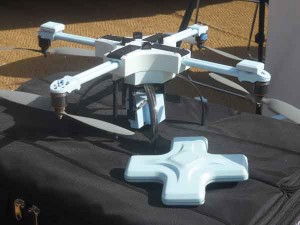 Alenia Aermacchi had a wide range of products to offer to the Indian aerospace sector. These included the C-27J Tactical Transport Aircraft for the IAF, the ATR 72 MP Maritime Patrol Aircraft for the Indian Coast Guard, a range of trainer aircraft such as the SF-260E and the SF-260TP for the basic training and the M-345 and the M-346 for advanced training and Unmanned Aerial Systems.
Alenia Aermacchi had a wide range of products to offer to the Indian aerospace sector. These included the C-27J Tactical Transport Aircraft for the IAF, the ATR 72 MP Maritime Patrol Aircraft for the Indian Coast Guard, a range of trainer aircraft such as the SF-260E and the SF-260TP for the basic training and the M-345 and the M-346 for advanced training and Unmanned Aerial Systems.
Present in India since 1970, AgustaWestland was awarded the contract for 12 AW101 helicopters to the IAF for VVIP travel. At Defexpo, the company exhibited its range of modern military helicopters including the AW101, the AW119Ke, the AW109LUH, the AW139 Coast Guard, the naval version of the NH90. Earlier during the month, the company entered into a joint venture with Tata Sons designated as Indian Rotorcraft Limited to establish a helicopter production facility in Hyderabad. The facility will be operational by mid-2013 adding a new dimension in the capability of the Indian aerospace industry in the private sector.
Israel, a major supplier of defence equipment, had perhaps the largest pavilion occupying nearly 1,300 square metres.
EADS was represented at the Expo by Airbus Military, Eurocopter and Cassidian, all three set to make inroads into the Indian defence market through collaboration with the Indian aerospace industry both in the public and private sector and the R&D organisations. Airbus Military has participated in the Flight Refuelling Aircraft tender for the IAF fielding the A330 Multi-Role Tanker Transport (MRTT), the only new generation tanker/transport flying and certified today. Airbus Military is also offering the maritime variant of the proven C295 or CN235 aircraft for the Indian Navy.
Eurocopter had on display scale models of its AS550 C3 Fennec, AS565 MBe Naval Panther and EC725 rotorcraft, all of which are competitors for ongoing and future contracts for the Indian Armed Forces. Eurocopter is the first global aerospace major to establish an Indian subsidiary to provide services network countrywide. Cassidian is into a joint venture with Larsen & Toubro for design, engineering, manufacturing, distribution and marketing products in the fields of electronic warfare, radars, avionics and mobile systems for military application. It provides consultancy for the Tejas programme and has successfully demonstrated to the Indian Army the Tracker, its mini tactical UAV for surveillance and intelligence roles.
With 25 companies showcasing a range of products and technologies, France was well represented.
DRS Technologies offers its Indian customers ultra-rugged computing, night-vision systems and display solutions for data presentation, situational awareness and command and control decision-making; solutions that can operate efficiently even in critical operational theatres. At the Defexpo, DRS Technologies exhibited its range of products.
With SELEX Galileo India Private Limited, the parent company SELEX Galileo has expanded its footprint in India. The company had on display its Electronic Warfare products such as the Aircraft Gateway Processor which is now part of the standard fit on the Apache AH-64, the next-generation ELINT system SAGE to meet the needs of India’s Rustom-2 MALE UAS and the SEER Radar Warning Receiver which is the perfect fit for India’s Hawk Advanced Jet Trainer. SELEX Galileo was also displaying the Mirach 100/5 aerial target drone, under order by the DRDO and its latest Active Electronically Scanned Array radar, the Seaspray family of surveillance radars, the PicoSAR Synthetic Aperture Radar and elements of their Airborne Tactical Observation and Surveillance avionics suite which, mated with the Seaspray radar technology, is currently focused on a number of Indian competitions. A range of modern Electro-Optic cameras and fire control systems were also on display.
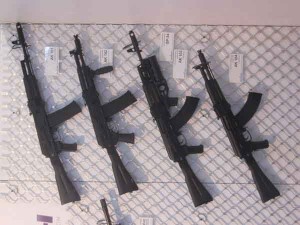 At the Defexpo, Oto Melara which is already the market leader in India with the 76/62 Super Rapid medium-caliber naval gun, produced under license by BHEL, exhibited the 127/64 Light Weight Naval Gun Mount Mock up, the DART Ammunition, the Vulcano 127/64 Ammunition and at the Pipapav stand, the HITFIST OWS.
At the Defexpo, Oto Melara which is already the market leader in India with the 76/62 Super Rapid medium-caliber naval gun, produced under license by BHEL, exhibited the 127/64 Light Weight Naval Gun Mount Mock up, the DART Ammunition, the Vulcano 127/64 Ammunition and at the Pipapav stand, the HITFIST OWS.
WASS, which has operated in India since 1976, displayed the Black Shark Heavy Weight Torpedo, the A244/S Mod. 3 Light Weight Torpedo, the C310 Countermeasure system for submarines and the Black Snake. The company also formally unveiled at the show the Flash-Black, the next generation Light Weight Torpedo.
Saab’s portfolio for the DefExpo included products from the air, land, naval and civil security domains. The focus was on Land and Naval Systems, with a highlight on the RBS 70 NG a versatile missile system and its Autonomous Underwater Vehicle systems designed for long range missions. In the air domain, Saab’s portfolio covered a range of surveillance aircraft as well as the Gripen, a fourth-generation combat aircraft. Also on offer was the Skeldar V-200, a fully autonomous and mobile Unmanned Aircraft System that is suitable for missions such as reconnaissance, surveillance and identification. The Saab 2000 MPA is a multi-role airborne surveillance platform for Intelligence, Surveillance & Reconnaissance role and maritime patrol.
The Future
Estimates are that India will continue to be a huge arms market and over the next decade, the government is likely to spend $250 billion to procure weapons and systems. Of the total estimate, $20 billion is expected to be spent on Homeland security. The IAF alone is expected to invest over $80 billion in the next five years to restore its combat potential through capital acquisition of fighter aircraft and other allied weapon systems. The Defexpo is undoubtedly set to grow in the years ahead driven essentially by the growing demand for weapons and other systems to meet with the needs of national security.




